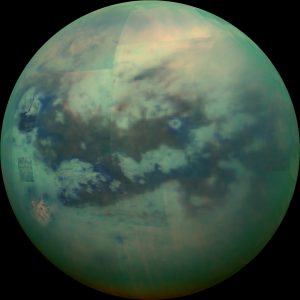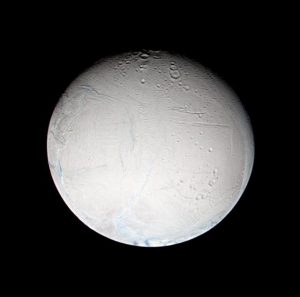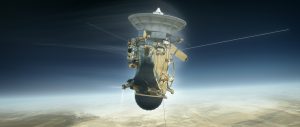The distance of Saturn to the Sun is 9,5 times that of the Earth, and Saturn takes 29.5 years to complete its orbit around the Sun.  Saturn has a lot of moons, but the largest of these- Titan – is as large as the planet Mercury.
Saturn has a lot of moons, but the largest of these- Titan – is as large as the planet Mercury.

Titan is the only solar system body except the Earth to have lakes on its surface. Titan also has a large orange atmosphere, with a pressure at the surface twice that of the Earth.
A number of spacecraft’s has visited Saturn. The first to make a fly-by was Pioneer 10 in 1973.
One year on Saturn lasts 10 760 Earth days.
One day on Saturn lasts 0.44 Earth days or equivalent to 10 hours 34 minutes.
A calendar year on Saturn thus lasts 24 410 Saturn days.
The largest moon of Saturn – Titan – is the second largest moon in the solar system only surpassed by Ganymedes by a few kilometers.

The small moon Enceladus is 500 km in diameter. It caused a great sensation when the orbiting spacecraft Cassini discovered large geisers, shooting in to space over the south pole of Enceladus. The surprise was large, because so small a moon that it was expected to be frozen solid. However, tidal forces from Saturn and other large moons has been able to melt the interior of Enceladus.

Additional observations by Cassini of these geysers has shown that they consists of water mixed with different salts and a few simple organic compounds.